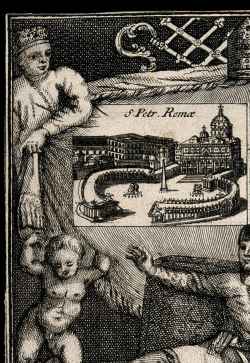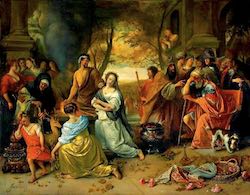Topic: 2. Sacrifice and religion: Comparisons, Antiquarians, Anthropology (16th-18th Century)
Religious sacrifices across various cultures and contexts sparked widespread interest in Early Modern Europe. As Christianity expanded into regions inhabited by "infidels" and "pagans", Europeans encountered a diverse array of sacrificial customs, ranging from the Sati rituals in India to the Aztec sacrifices in the Americas. This cross-cultural exposure captivated a wide audience, including theologians, philosophers, political thinkers, antiquarians, orientalists, missionaries, poets, artists, and even the general public. These encounters broadened the European understanding of sacrifice and led to a critical reassessment of classical and biblical sacrificial rites. This section includes:
- Sources: A selection of early modern printed materials, which include descriptions of the Americas, Asia, and Africa, alongside antiquarian and philological studies on religious sacrifice in classical antiquity and beyond. It also presents early modern works of ethnological observations and the first attempts to compare different sacrificial practices in various traditions and contexts, laying the groundwork for disciplines like the history of religions and anthropology.
- Iconographic Representations: A rich collection of images from the 16th to 18th centuries, illustrating a range of sacrificial rituals and practices as seen in different cultural and geographical contexts.
- Related Bibliography: An extensive bibliography spanning scholarly works from the 19th to 21st centuries, providing contemporary analyses and interpretations of these early studies and observations.
Fools, Martyrs, Traitors: The Story of Martyrdom in the Western World
New York: Alfred A. Knopf, 1997.
A Note on Burning Babies
in: Journal of the American Oriental Society, v. 95 (1975), issue 3: pp.477-479.
Animal Minds and Human Morals: The Origins of the Western Debate
Ithaca, NY: Cornell University Press, 1993.
El sacrificio en el culto de los Orichas : (religión yorubá)
La Habana: Ediciones Ifatumó - Ediciones Cubanas, 1998.
Death and the King's Horseman
London: Eyre Methuen, 1975.
De Iesu Christo servatore, hoc est, cur et qua ratione Iesus Christus noster servator sit, Fausti Socini Senensis disputatio. Quam annos ab hinc circiter decem et septem scripsit, respondens Iacobo Coveto Parisiensi, Evangelico, ut vocant, ministro; cujus scriptum ordine, suis locis, per partes digestum, in ea habetur. In qua multa, quae apud Evangelicos, et partim etiam apud alios, salutaria Christianae religionis axiomata creduntur, perniciosi errores esse demonstrantur; et tota salutis nostrae per Christum ratio copiose ac dilucide explicatur
[Raków]: Typis Alexii Rodecii, 1594.
Praelectiones theologicae Fausti Socini Senensis
Raków: Typis Sebastiani Sternacii, 1609.
Blood
in: Anchor Bible Dictionary, pp. 761-763
Yale : Yale University Press, 1992.
The Last Trial: On the Legends and Lore of the Command to Abraham to Offer Isaac as a Sacrifice: The Akedah
Philadelphia: The Jewish Publication Society of American, 1967.
The Rite of Child Sacrifice at Carthage
in: New Light on Ancient Carthage, pp. 1-12
Ann Arbor: University of Michigan Press, 1980.
The Daughter's Sacrifice and the Paternal Order in Racine's Iphigénie en Aulide
in: The Dynamics of Gender in Early Modern France: Women Writ, Women Writing, pp. 63-88
Furnham - Burlington: Ashgate, 2014.
The Sacrifice of Iphigenia (1671)
Museum of Fine Arts, Boston
Die griechischen Kultusaltertümer
München: C. H. Beck'sche Verlagsbuchhandlung, 1920.
Opfergebräuche der Griechen
Leipzig - Berlin: Teubner, 1910.


